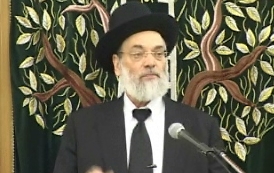- Torah Portion and Tanach
- Balak
34
Our Sedra of Balak is unusual, to say the least. First, Moshe, atypically, is not the central figure in the Parsha; he only appears at the very end. Bilaam, the Sedra’s key personality, is referred to as "Bilaam ha-Rasha," the evil one, & so it is strange in the extreme that he is given center stage & allowed to voice all his curses cum blessings for the bulk of the reading.
But there is another anomaly I’d like to focus on. If you look at this Parsha in a Sefer Torah, you will immediately notice that Bilaam’s narrative is written in "block form" without the usual open spaces (parsha "breaks") that are found in most Parshiyot. (Indeed, the very name of the sedra, "Balak" can be read, minus the vowels, as "block!").
What is the purpose of these open spaces? Chazal tell us that they are meant to give the reader pause, so we have time to consider the passage just read. The more difficult or involved the subject matter – the 10 Commandments, for the best example - the more open spaces there are.
The message here is that the Torah is not meant to be read robotically, by rote. We are meant to focus on each word & Pasuk and think carefully about their meaning & how it relates to us. By applying our own intelligence & thoughts, we can hopefully internalize the deep ideas imbedded in the Torah by Hashem.
One of the real blessings of the Corona lock-downs was that my Susie & I spent a long time each Shabbat slowly reading the Parsha & pondering it. Unlike in shul, where the Torah reading literally flies by, we could now dissect & discuss it at our leisure. What a joy that was – and is!
Bilaam uttered prophecies that were indeed Heaven-sent, & are a lasting part of our liturgy (think "Mah Tovu," or "Am k’lavi"). But Bilaam, sadly, did not ponder their deeper essence; he did not internalize their message & change his character. And so the "blessings" of Bilaam are written without spaces, as opposed to the Torah of Moshe, which has an abundance of breaks in the action.
I remember walking into the office of a day school principal many years ago, & on his desk was a sign with the letters, Chet, Shin, Vav & Vet. "Hmm" I thought, "that spells, 'Chashuv,' important! Is he really that conceited?!" But then he saw me looking at the sign & smiled, "It says Chashov!" he said. "That means, "Think!"
Having said all this, we can now complete that opening phrase: "I think, therefore I am... Jewish!"

Understanding the Prohibition of Avodah Zarah
Rabbi Yirmiyohu Kaganoff | Av 26 5777

Delayed Chanukat Habayit
Rabbi Daniel Mann | Cheshvan 12 5776

Delayed Chanukat Habayit
Rabbi Daniel Mann | Cheshvan 12 5776

What Is the Significance of the Number 40 in Jewish Tradition?
Rabbi Stewart Weiss | Tevet 4 5782
Daf Yomi Makkot Daf 21
R' Eli Stefansky | 1 Iyar 5785

P'ninat Mishpat: Rental of an Apartment that Was Not Quite Ready – part II
based on ruling 82031 of the Eretz Hemdah-Gazit Rabbinical Courts
Beit Din Eretz Hemda - Gazit | Iyar 5784





